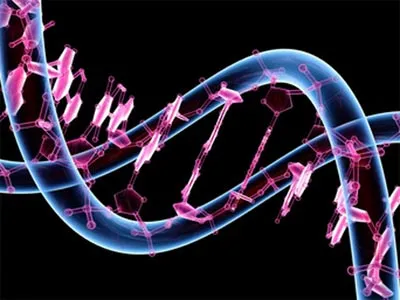Researchers at the Perelman Medicine Faculty of the University of Pennsylvania (PENN), in the United States, have demonstrated how an anti -dialing medication can have variable effects depending on small natural differences in the DNA sequence among individuals.Mitchell Lazar, Raymond Soccio and his colleagues in Perelman, whose work is published in 'Cell', intend to apply this knowledge to develop personalized approaches for the treatment of diabetes and other metabolic disorders.
Lazar and the equipment focused on the important molecule of fat cells called PPAR-gamma, which is the objective of the TiazolidineDiones (TZD) medications used to treat type 2 diabetes. PPAR-GAMMA joins the DNA in the switches thatThey turn on other genes and Penn researchers showed that natural genetic differences in the DNA of this regulatory switch could determine if PPAR-gamma and TzD drugs could activate other genes.
"The implications of this work go beyond PPAR-GAMMA and TZD, to all medications that are directed to that function directly in the genome to regulate physiology in health and disease," says Soccio, main author of the study andProfessor of Medicine.
In fact, 20 percent of all recipes are for medications such as thyroid hormone and steroidDiabetes, Obesity and Metabolism of the University.
Genetic differences are called SNPs or simple nucleotide polymorphisms and are variants in the DNA alphabet of molecules A, T, C, G and that occur naturally among individuals.Many of these SNPs have been associated with the risk of disease, for example, a person with one A in a given place in the DNA has a higher risk of diabetes compared to someone with a G. However, these SNPS related to theDisease often reside in the so -called "dark matter" of the genome, which does not directly encod the genes, but includes switches that control the genes.
Lazar and his equipment showed that SNPs in PPAR-GAMMA switches provide a mechanism for disease risk associations.For example, one of these SNP was related to blood lipids, including HDL cholesterol ("good" cholesterol) and triglycerides;Type 2 diabetes, high blood pressure and the waist-cala ratio (a measure of obesity by body shape as an "apple" in the face of "pear" shape).This set of findings is called "metabolic syndrome" and Soccio points out that "it is notable that a single change in a DNA letter determines whether PPAR-gamma joins a regulation site in the fatty tissue and this can alter the risk of aperson to suffer metabolic syndrome. "
The Penn team began with animal studies, which show that natural SNPs that differ between mouse strains could determine if PPAR-GAMMA finds its path to its DNA regulatory switch in the dark matter of the genome.Then they treated Mice with TZD and saw that these SNP could also determine if the active drug genes.
The fact that an individual's genetic composition can affect the response of the drugs has led to the relatively new field of the personalized pharmacogenomics."Our study provides a proof of concept that the regulatory genetic variation that occurs naturally can affect the activation of genes in which the nuclear receptor intercedes and, more generally, the response of drugs in live animals-says Lazar--This has a special meaning forTzd, which have powerful antidiabetic effects, but their clinical utility is limited due to lack of response, side effects and adverse events. "
TZD are the only diabetes medications that are directed to fat cells and improve a diabetic response to insulin, however, they have recently fallen into disuse due to side effects such as edema and loss of mass lossbone, as well as the risks detected of heart attacks and bladder cancer.Moreover, 20 percent of patients with type 2 diabetes fail to improve their diabetes control in TZD.
"One day, the approaches that we have used in this study could be used to predict who will benefit from most drugs similar to TZD, so we now have to determine the pattern of SNP differences that together can demonstrate why these medicationsThey have benefits or damage to one person and not another-explains Soccio.
The team went on to study the human adipose tissue, provided by obese patients with bariatric surgery in Penn.As in mice, the variation in human SNPS also affected the union of PPAR-GAMMA to DNA regulation switches, allowing researchers to "analyze" these SNPs in powerful great human genetic studies.
They used a Finland database to find how many genes are on in the fatty tissue of more than 1,500 people to demonstrate that the SNPs that affect the Ppar-Gamma union also determine the levels of genetic activity in the human population.Finally, they analyzed great human genetic analyzes called Full Genome Association Studies (GWAS) and saw that SNPs that affect the union of Ppar-Gamma in fats that underlie some of the risks for metabolic diseases.
These studies show for the first time that natural genetic variation in the union of PPAR-gamma to DNA in fat cells can determine the risk of individual disease and the response to the drug."Our work sheds a lot of light on genetic differences in PPAR-gamma attached to the regulatory DNA and how these differences between people can allow us to better predict metabolic disease and then apply precision medicine for treatment or prevention," summarizes soccio.


